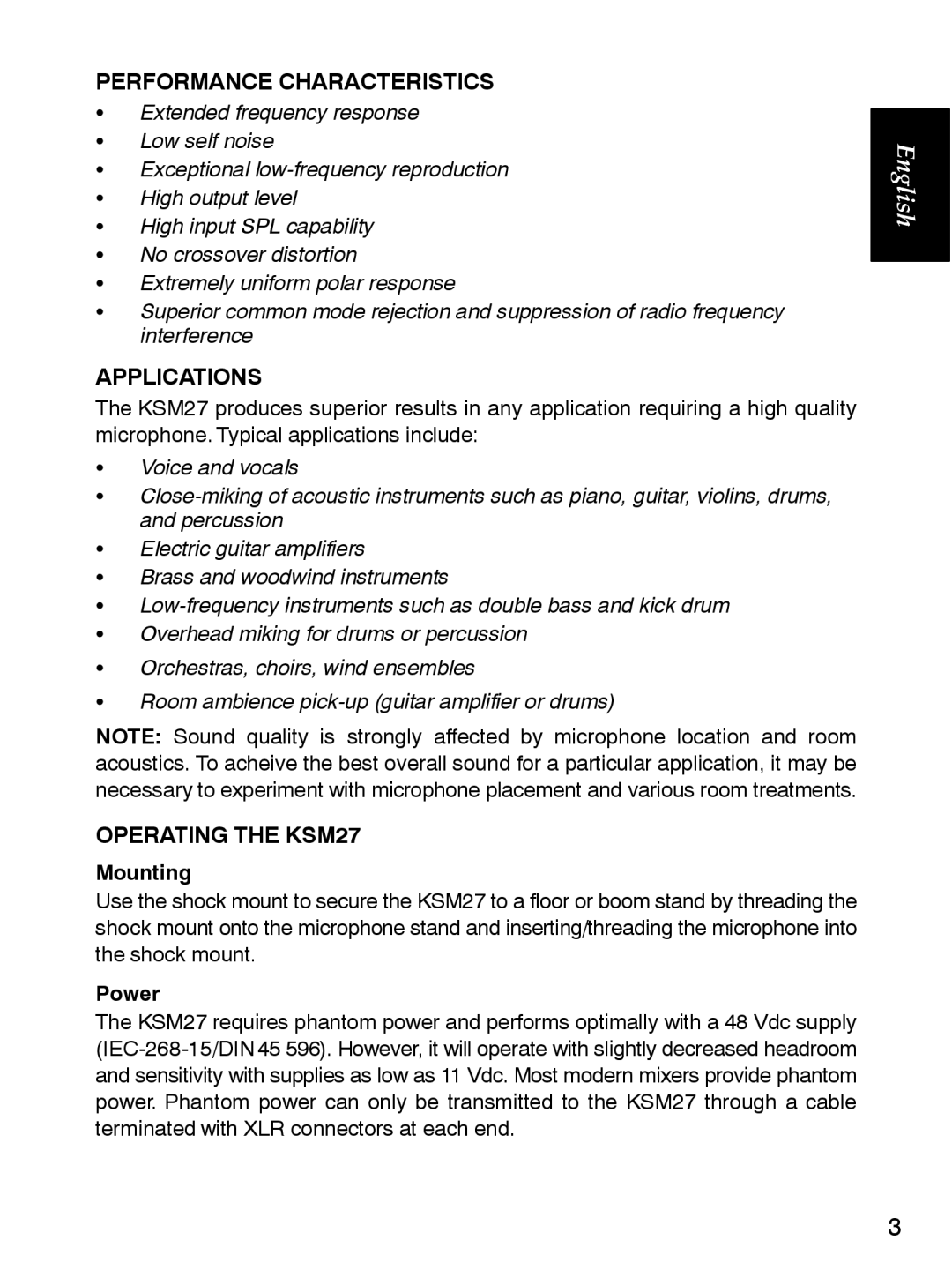PERFORMANCE CHARACTERISTICS
SExtended frequency response
SLow self noise
SExceptional
SHigh output level
SHigh input SPL capability
SNo crossover distortion
SExtremely uniform polar response
SSuperior common mode rejection and suppression of radio frequency interference
APPLICATIONS
The KSM27 produces superior results in any application requiring a high quality microphone. Typical applications include:
SVoice and vocals
S
SElectric guitar amplifiers
SBrass and woodwind instruments
S
SOverhead miking for drums or percussion
SOrchestras, choirs, wind ensembles
SRoom ambience
NOTE: Sound quality is strongly affected by microphone location and room acoustics. To acheive the best overall sound for a particular application, it may be necessary to experiment with microphone placement and various room treatments.
OPERATING THE KSM27
Mounting
Use the shock mount to secure the KSM27 to a floor or boom stand by threading the shock mount onto the microphone stand and inserting/threading the microphone into the shock mount.
Power
The KSM27 requires phantom power and performs optimally with a 48 Vdc supply
3
